 W
WThe M24 Chaffee is an American light tank used during the later part of World War II; it was also used in post–World War II conflicts including the Korean War, and by the French in the War in Algeria and the First Indochina War. In British service it was given the service name Chaffee after the United States Army General Adna R. Chaffee Jr., who helped develop the use of tanks in the United States armed forces. M24s were mostly removed from U.S. and NATO armies by the 1960s, but remained in service with some Third World countries.
 W
WCobra King is an American Sherman tank of World War II. During the Battle of the Bulge in December 1944, the Germans had attacked a weakly defended section of the Allied line, and the tank was the first unit to enter the Bastogne perimeter in relief of the besieged 101st Airborne Division of the United States Army.
 W
WThe Continental AV1790 is an American V12 engine used in armored vehicles. Produced by Continental Motors, the AV1790 was used in a variety of limited production and pilot heavy tanks, including the M53 and M55 howitzers, and the T30 and M103 tanks.
 W
WThe M3 Lee, officially Medium Tank, M3, was an American medium tank used during World War II. The turret was produced in two forms, one for US needs and one modified to British requirements to place the radio next to the commander. In British service, the tank was called by two names: tanks employing US pattern turrets were called "Lee", named after Confederate general Robert E. Lee while those with British pattern turrets were known as "Grant", named after Union general Ulysses S. Grant.
 W
WThe M22 Locust, officially Light Tank (Airborne), M22, was an American-designed airborne light tank which was produced during World War II. The Locust began development in 1941 after the British War Office requested that the American government design a purpose-built airborne light tank which could be transported by glider into battle to support British airborne forces. The War Office had originally selected the Light Tank Mark VII Tetrarch light tank for use by the airborne forces, but it had not been designed with that exact purpose in mind so the War Office believed that a purpose-built tank would be required to replace it. The United States Ordnance Department was asked to produce this replacement, which in turn selected Marmon-Herrington to design and build a prototype airborne tank in May 1941. The prototype was designated the Light Tank T9 (Airborne), and was designed so that it could be transported underneath a Douglas C-54 Skymaster transport aircraft, although its dimensions also allowed it to fit inside a General Aircraft Hamilcar glider.
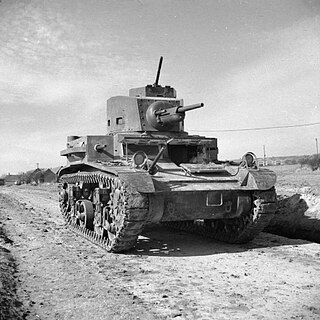 W
WThe M2 light tank, officially Light Tank, M2, was an American pre–World War II light tank which saw limited use during World War II. The most common model, the M2A4, was equipped with one 37 mm (1.5 in) M5 gun and five .30 cal M1919 Browning machine guns.
 W
WThe M3 Stuart, officially Light Tank, M3, was an American light tank of World War II. An improved version entered service as M5. It was supplied to British and other Commonwealth forces under lend-lease prior to the entry of the U.S. into the war. Thereafter, it was used by U.S. and Allied forces until the end of the war.
 W
WThe M4 Sherman, officially Medium Tank, M4, was the most widely used medium tank by the United States and Western Allies in World War II. The M4 Sherman proved to be reliable, relatively cheap to produce, and available in great numbers. It was also the basis of several successful tank destroyers, such as the M10, 17pdr SP Achilles and M36B1. Tens of thousands were distributed through the Lend-Lease program to the British Commonwealth and Soviet Union. The tank was named by the British for the American Civil War general William Tecumseh Sherman.
 W
WThe M4 Sherman tank was produced in several variants, a result of mass production spread across several manufacturers and several years. It was also the basis for a number of related vehicles, and Shermans have been modified by several nations, ranging from upgrades to complete hull conversions for another task. Originally designed in 1941, M4 variants were still used by Israel during the 1967 and 1973 wars.
 W
WThe M4 Sherman, officially Medium Tank, M4, was the most widely used medium tank by the United States and Western Allies in World War II. The M4 Sherman proved to be reliable, relatively cheap to produce, and available in great numbers. It was also the basis of several successful tank destroyers, such as the M10, 17pdr SP Achilles and M36B1. Tens of thousands were distributed through the Lend-Lease program to the British Commonwealth and Soviet Union. The tank was named by the British for the American Civil War general William Tecumseh Sherman.
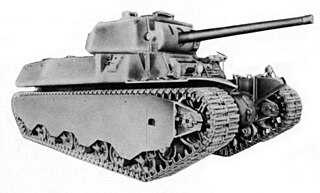 W
WThe Heavy Tank M6 was an American heavy tank designed during World War II. The tank was produced in small numbers and never saw combat.
 W
WThe Marmon-Herrington Combat Tank Light Series were a series of American light tanks/tankettes that were produced for the export market at the start of the Second World War. The CTL-3 had a crew of two and was armed with two .30 cal (7.62 mm) M1919 machine guns and one .50 cal (12.7 mm) M2 Browning machine gun. They were originally designed to be amphibious light tanks. They were rejected by the U.S. Marine Corps in 1939, but after the attack on Pearl Harbor they were exported and used as an emergency light tank.
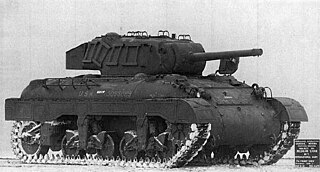 W
WThe Medium Tank M7, initially Light Tank T7, was an American tank, originally conceived as an up-gunned replacement for the Light Tank M3/M5 ("Stuart"). The project developed to mount the same 75mm armament as the M4 Sherman while retaining the light weight and maneuverability of the M3 Stuart; however, during development the weight of the prototype surpassed the US Army's standard for light tanks and crossed into the medium tank category and was renamed. The M7 had significantly less armor than the M4 Sherman, no greater firepower, and held only a slight advantage in top speed. For these reasons, and because the M4 was already battle-tested and in full production, the M7 was cancelled in 1943.
 W
WThe M2 Medium Tank, officially Medium Tank, M2, was a United States Army medium tank that was first produced in 1939 by the Rock Island Arsenal, just prior to the commencement of the Second World War in Europe. Production was 18 M2 tanks, and 94 slightly improved M2A1 tanks, for a total of 112. Events in Western Europe rapidly demonstrated that the M2 was obsolete, and it was never used overseas in combat; it was, however, used for training purposes throughout the war.
 W
WThe M26 Pershing was a heavy tank/medium tank of the United States Army. The tank was named after General of the Armies John J. Pershing, who led the American Expeditionary Force in Europe in World War I. It was used in the last months of World War II during the Invasion of Germany and extensively during the Korean War.
 W
W"Rhino tank" was the American nickname for Allied tanks fitted with "tusks", or bocage cutting devices, during World War II. The British designation for the modifications was Prongs.
 W
WThe M4 Sherman tank was produced in several variants, a result of mass production spread across several manufacturers and several years. It was also the basis for a number of related vehicles, and Shermans have been modified by several nations, ranging from upgrades to complete hull conversions for another task. Originally designed in 1941, M4 variants were still used by Israel during the 1967 and 1973 wars.
 W
WThe United States provided tens of thousands of its Medium Tank M4, also named the Sherman, to many of its Allies during the Second World War, under the terms of Lend-Lease.
 W
WThe Assault Tank T14 was a joint project between the United States and the United Kingdom with the goal being to produce a universal infantry tank.
 W
WThe Medium Tank T20, Medium Tank T22 and Medium Tank T23 were medium tank designs developed by the United States during the Second World War, to be the successor to the M4 Sherman.
 W
WThe T28 Super Heavy Tank was an American heavily armored tank/self-propelled gun designed for the United States Army during World War II. It was originally designed to break through German defenses of the Siegfried Line, and was later considered as a possible participant in the planned invasion of the Japanese mainland.
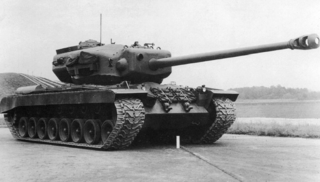 W
WThe Heavy Tank T29 was an American heavy tank project started in March 1944 to counter the appearance of the German Tiger II heavy tank. The T29 was not ready in time for the war in Europe, but it did provide post-war engineers with opportunities for applying engineering concepts to artillery and automotive components.
 W
WThe Heavy Tank T30 was a World War II American tank project developed to counter new German tanks, such as Tiger I, Tiger II, and tank destroyers, such as the Jagdtiger, or Soviet heavy tanks, such as IS-1 or IS-2. The T30 was designed at the same time as the T29 Heavy Tank.
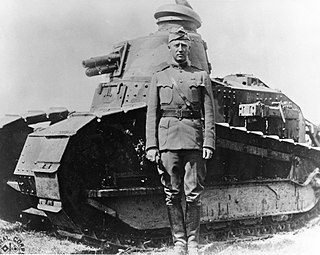 W
W